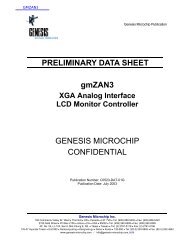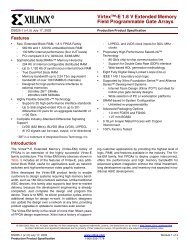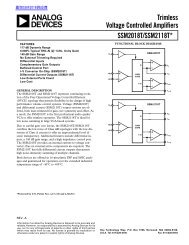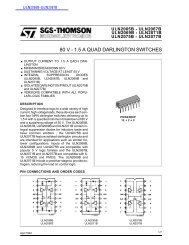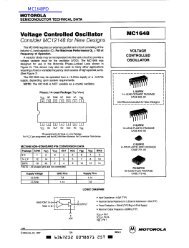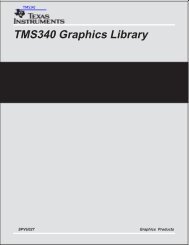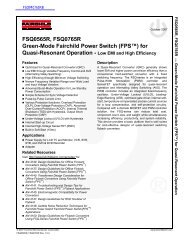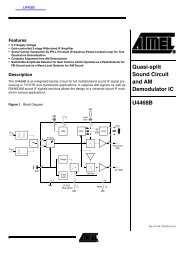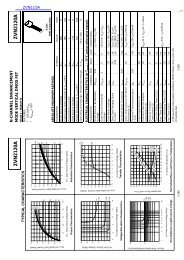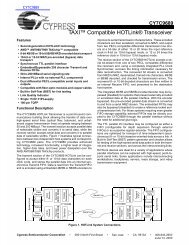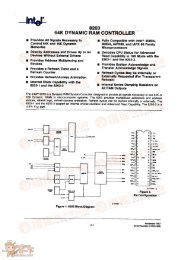Create successful ePaper yourself
Turn your PDF publications into a flip-book with our unique Google optimized e-Paper software.
Numonyx <strong>Wireless</strong> <strong>Flash</strong> <strong>Memory</strong> (<strong>W30</strong>)<br />
Figure 39: Word Boundary<br />
Note: The 16-word boundary is the end of the flash device sense word-line.<br />
14.2.1 Latency Count Settings<br />
Table 29: Latency Count Settings<br />
Word 0 - 3 Word 4 - 7 Word 8 - B Word C - F<br />
0 1 2 3 4 5 6 7 8 9 A B C D E F<br />
t AVQV /t CHQV (85ns/22ns) t AVQV /t CHQV (70ns/20ns) t AVQV /t CHQV (90ns/22ns) Unit<br />
Latency Count<br />
Settings<br />
2 3, 4, 5 2, 3, 4, 5 2 3, 4, 5<br />
Frequency < 31 < 33 < 40 < 29 < 33 MHz<br />
Figure 40: Data Output with LC Setting at Code 3<br />
CLK (C)<br />
CE# (E)<br />
ADV# (V)<br />
A MAX-0 (A)<br />
DQ 15-0 (D/Q)<br />
4 Word Boundary<br />
t ADD-DELAY<br />
14.3 WAIT Signal Polarity (RCR[10])<br />
16 Word Boundary<br />
• If the WT bit is cleared (RCR[10]=0), then WAIT is configured to be asserted low. A<br />
0 on the WAIT signal indicates that data is not ready and the data bus contains<br />
invalid data.<br />
• Conversely, if RCR[10] is set, then WAIT is asserted high.<br />
November 2007 Datasheet<br />
Order Number: 290702-13 81<br />
R103<br />
High Z<br />
t DATA<br />
0st 1nd<br />
2rd 3th 4th<br />
Code 3<br />
Valid Address<br />
Valid<br />
Output<br />
Valid<br />
Output



